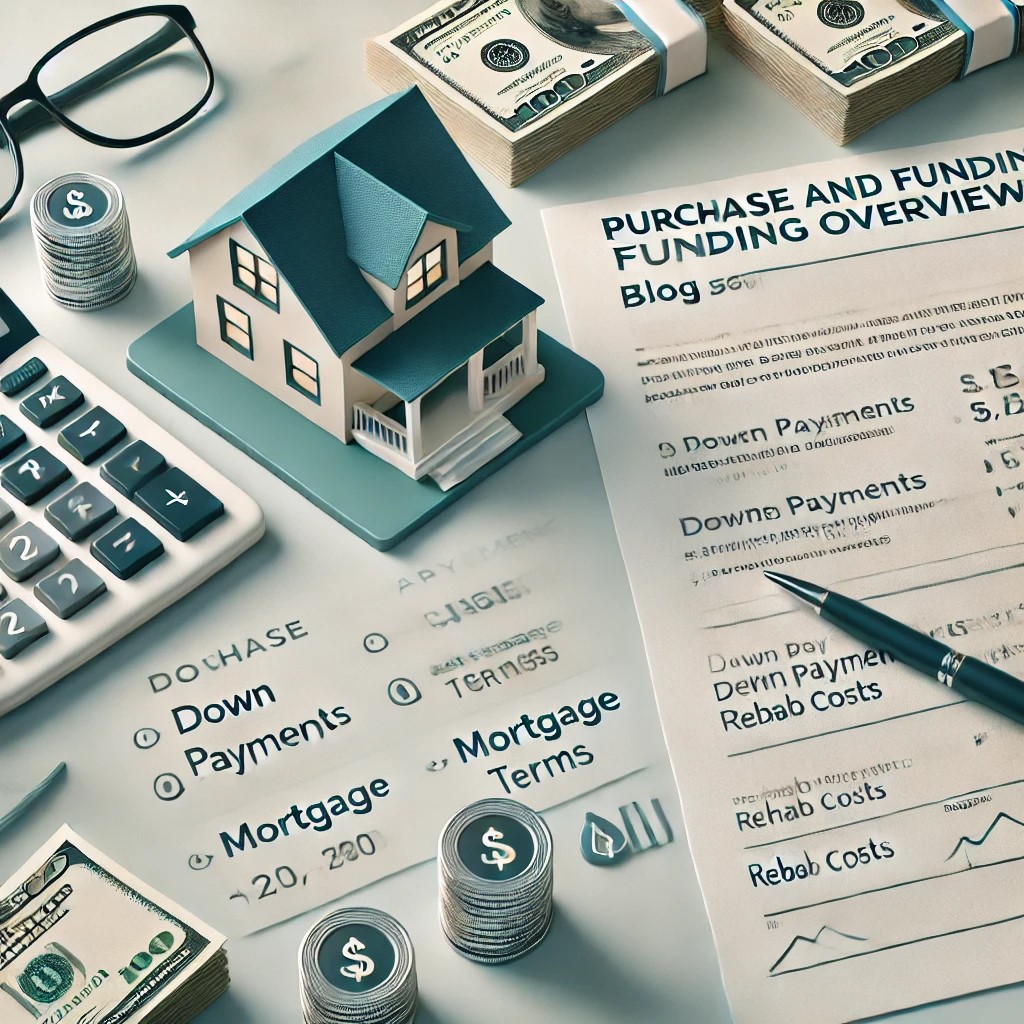Updated about 2 months ago on .
How to Analyze Rental Properties Before Buying?

Real estate investing might sound intimidating at first, especially when you hear about formulas and math involved. But understanding the numbers is what separates successful investors from the rest. Let’s simplify some of the key metrics that can help you make smarter decisions when evaluating a property.
The Importance of Real Estate Math
When you invest in real estate, you’re not just buying a property; you’re buying income potential, future growth, and financial stability. To ensure you’re making the right choice, it’s crucial to understand how the numbers work. Here are the main calculations every investor should know:
Key Real Estate Formulas
1. Cash Flow
Formula:
CashFlow=TotalIncome−TotalExpenses
Cash flow shows you how much money you’ll have left after paying all your expenses, including mortgage payments, taxes, insurance, property management fees, and maintenance. Positive cash flow means your property is earning you money each month, while negative cash flow means it’s costing you.
Example: Let’s say you purchase a rental property with a monthly rent of $2,000. Your monthly expenses include:
- Mortgage: $1,200
- Taxes: $200
- Insurance: $100
- Maintenance and Property Management: $150
Total Expenses: $1,650 Cash Flow: $2,000 - $1,650 = $350/month
This positive cash flow means you’re earning $350 each month after covering expenses.
2. Cap Rate (Capitalization Rate)
Formula:
CapRate=(NetOperatingIncome/PurchasePrice)×100
The cap rate is a quick way to assess a property’s potential return. A higher cap rate usually indicates a better return on your investment, but it’s essential to compare it to market averages for similar properties.
Example: Imagine you buy a property for $300,000 that generates $30,000 in annual income after expenses.
CapRate=(30,000/300,000)×100=10%
A 10% cap rate suggests a strong return, depending on your market.
3. Cash-on-Cash Return
Formula:
Cash−on−CashReturn=(AnnualCashFlow/TotalCashInvested)×100
This metric focuses on how much return you’re making based on the actual cash you’ve invested. It’s especially useful for evaluating leveraged investments where you’ve used financing to purchase the property.
Example: You buy a property for $300,000 with a $60,000 down payment. Your annual cash flow is $4,200.
Cash-on-Cash Return = (4,200 / 60,000) × 100 = 7%
This means you’re earning a 7% return on your invested cash.
4. Gross Rent Multiplier (GRM)
Formula:
GRM=PropertyPrice/GrossAnnualRentalIncome
GRM helps you quickly compare properties without diving into detailed expenses. A lower GRM indicates that the property may be a better deal, but it's not as comprehensive as other metrics.
Example: A property priced at $250,000 generates $25,000 in annual rent.
GRM=250,000/25,000=10
A GRM of 10 suggests it would take 10 years of rental income to pay off the property's price (ignoring expenses).
5. Debt Service Coverage Ratio (DSCR)
Formula:
DSCR=NetOperatingIncome/TotalDebtService
Lenders use this ratio to determine whether a property's income can cover its debt payments. A DSCR greater than 1 means the property's income exceeds its debt obligations, which is a good sign for both investors and lenders.
Tools to Simplify the Math
You don’t need to be a math wizard to calculate these metrics. Tools like Cashflow Analyzer Pro with Deal Instant Analyzer can save you time and provide accurate insights. With automated calculations and visual breakdowns, you can focus on finding the right investment instead of crunching numbers.
Why These Metrics Matter
Real estate investing is all about reducing risk and maximizing returns. By understanding these formulas, you can:
- Avoid properties with poor cash flow.
- Spot hidden opportunities with good cap rates or GRMs.
- Ensure your investment aligns with your financial goals.
- Gain confidence in your decision-making process.
Final Thoughts
Learning the math behind real estate investing isn’t as scary as it seems. These formulas are your tools for success, helping you evaluate properties objectively and make informed decisions. Whether you’re just starting or looking to refine your strategy, understanding these numbers will set you apart from the crowd.
At Asset AFC we are here to make your journey easier. Ready to start running the numbers? Let’s make your next investment your best one!




